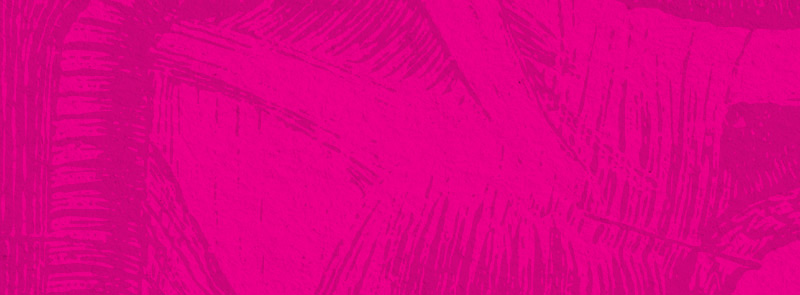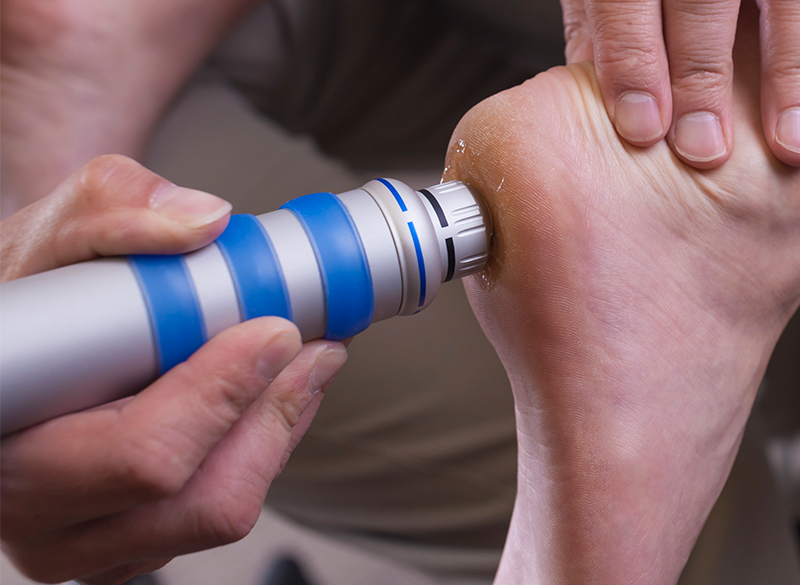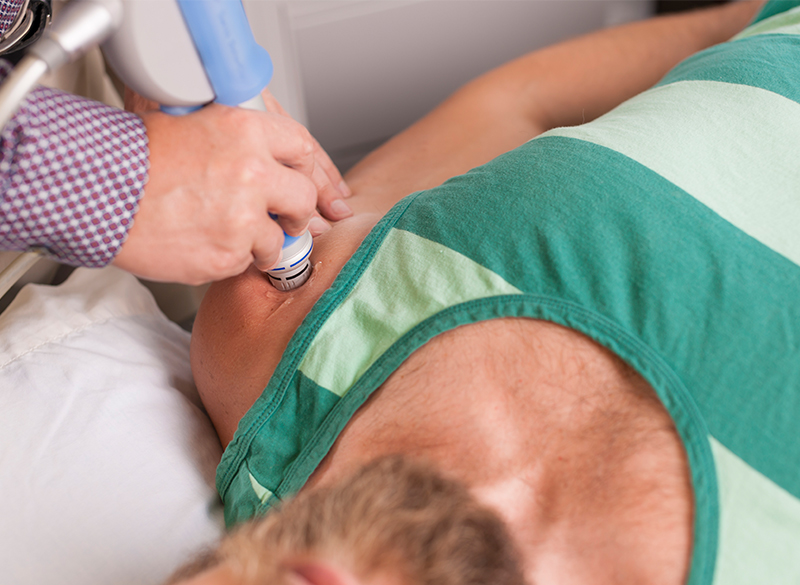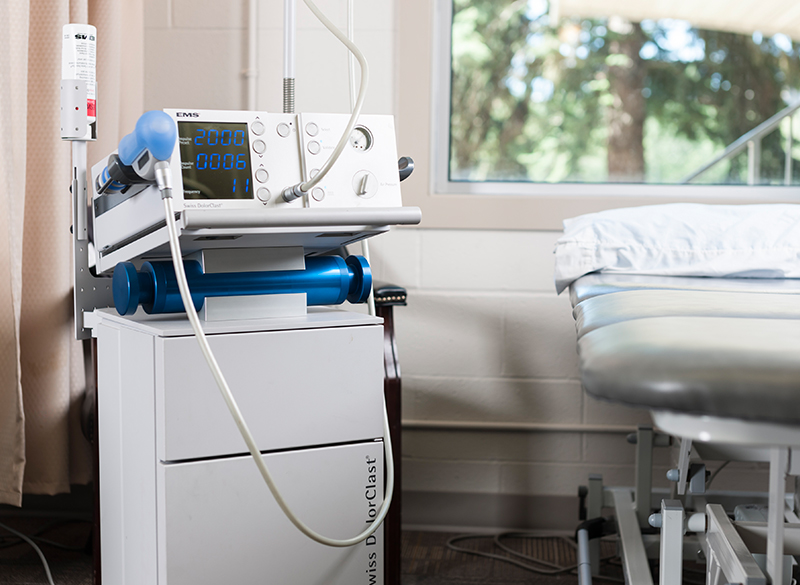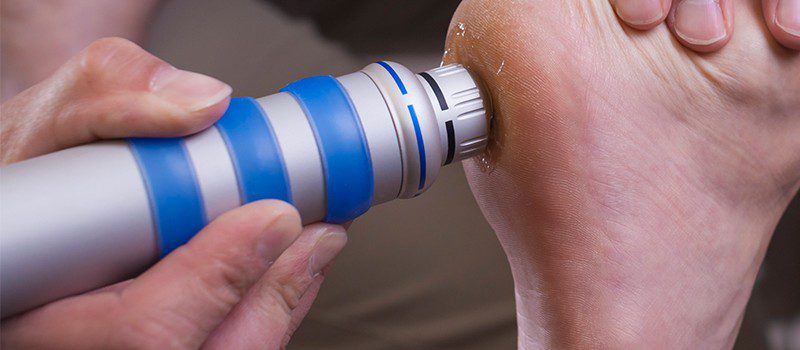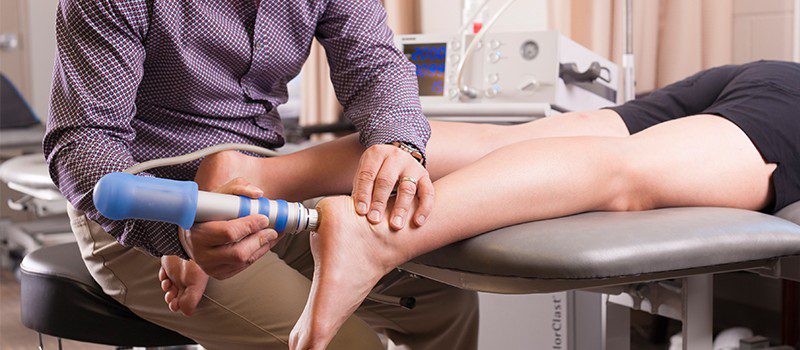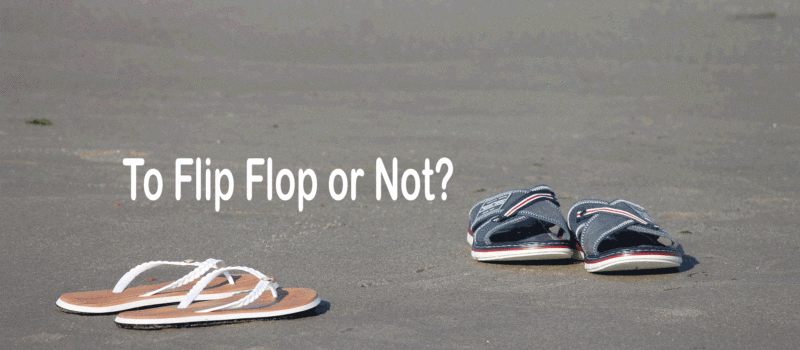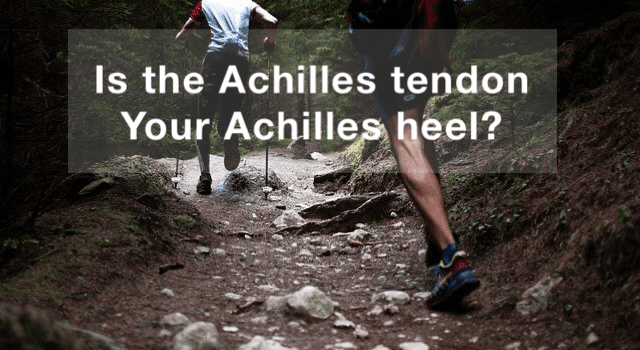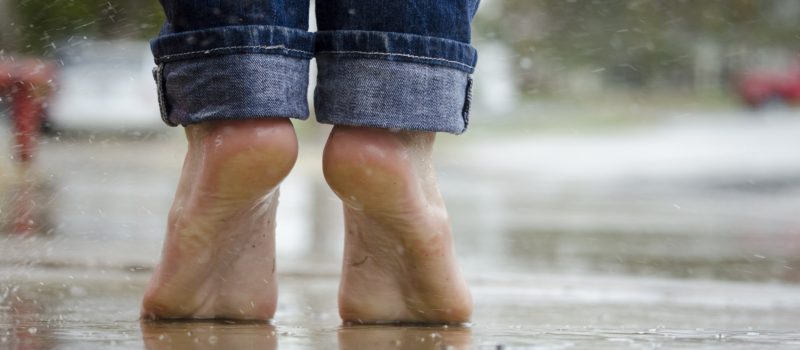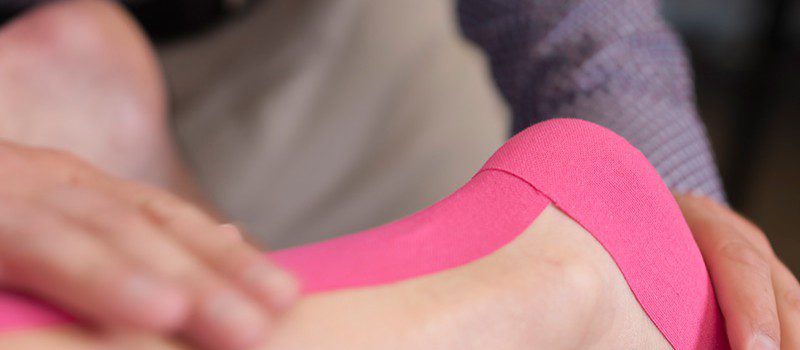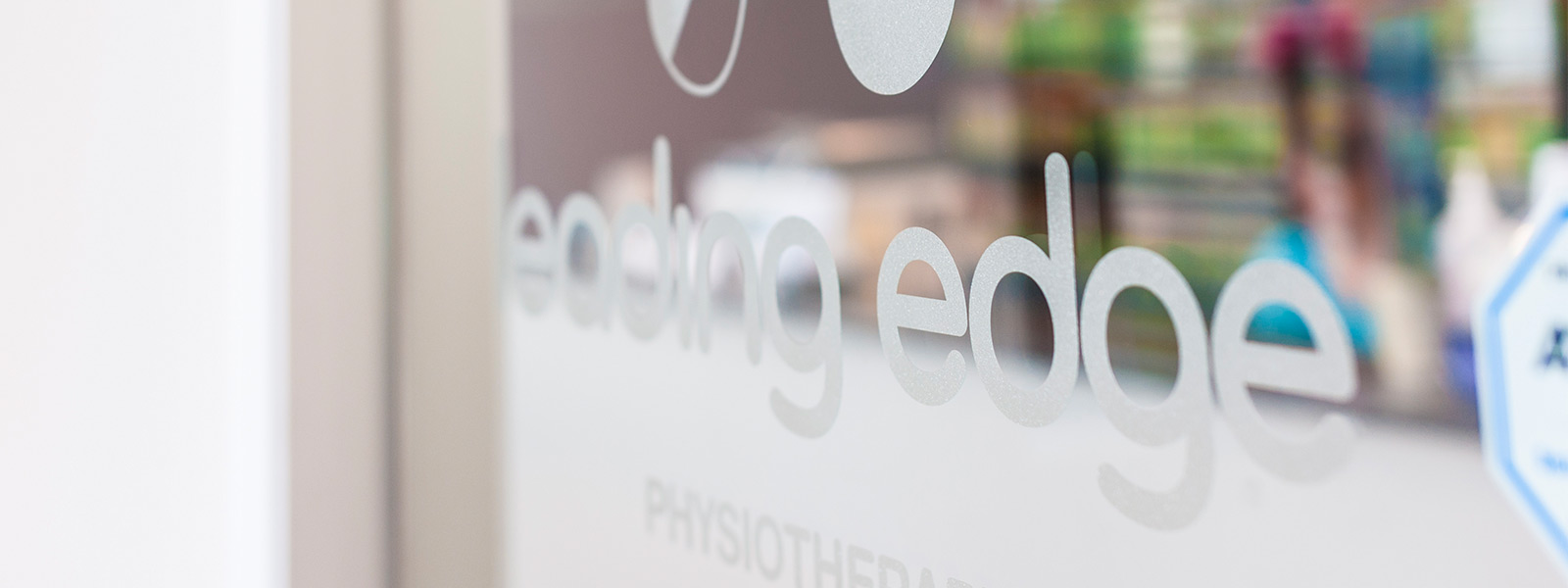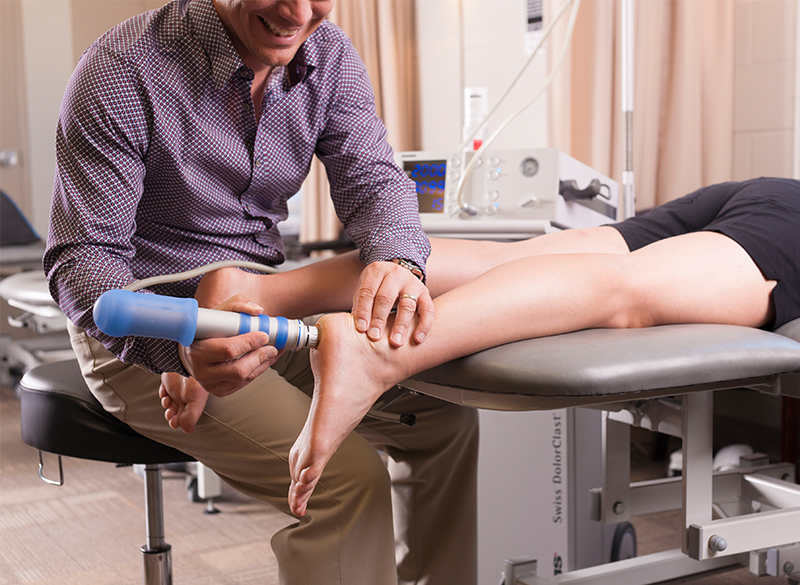
Available at Royal Glenora, Windermere, St. Albert, Sherwood Park, Capilano Rehabilitation Centre, Old Strathcona, Spruce Grove, Leduc, University District Calgary, Tower Sports Medicine Calgary, Heritage Valley, Okotoks, and Glenmore Landing Calgary locations.
when all else fails, tendon injuries and inflammation respond to radial shockwave
Leading Edge Physiotherapy is proud to be certified providers of Radial Shockwave in St. Albert, Sherwood Park, Spruce Grove and our Edmonton locations. All assessments and treatments are carried out by University trained and Alberta licensed physiotherapists who work hard to ensure the best care possible.
At Leading Edge Physiotherapy we offer the Swiss DolorClast® Master, a state-of-the-art technology that delivers a pneumatically generated high pressure sound wave that travels through the skin and into inflamed tissues and bone. The utilization of this technology gives us an edge in solving some of the most stubborn chronic conditions that a person can face.
how does radial shockwave work?
Radial shockwave is an acoustic pulse that is pneumatically generated. It causes the body to respond with increased metabolic activity around the site of pain. This increases the circulation and begins the healing process. The waves locally alter the chemical environment, stimulate the reabsorption of irritating calcium deposits and induce an analgesic effect. It takes 3 treatments completed one week apart with follow up appointments 4-12 weeks after the completion of those treatments.
Ultimately the shockwaves start the healing process over again.
how many treatments will it take to see results?
There can be results in as few as 3 treatments. Most patients feel significant results after the first treatment, however some do not notice until completion of the third. The key healing phase (fibroplasia) is complete after 6 to 8 weeks and by 3 months most patients have maximum relief. In some more difficult cases, we have had success with ongoing radial shockwave treatments. The decision is made on a case by case basis using ongoing assessment and consultation with you.
what types of injuries is radial shockwave used for?
- Plantar Fasciitis (heel pain)
- Achilles Tendinitis
- Shin Splints
- IT Band Friction Syndrome
- (Hip) Trochanteric Bursitis
- Lateral Epicondylitis (Tennis Elbow)
- Medial Epicondylitis (Golfer’s Elbow)
- Patellar Tendinitis (Jumper’s Knee)
- Rotator Cuff Tendinitis
- Pseudoarthrosis
- Pain caused by trigger points
how much does radial shockwave cost?
At our facilities the cost of treatments are $130. At Leading Edge Physiotherapy all shockwave treatments are carried out by University Trained and Certified physical therapists. Ultimately, this treatment is only effective if utilized on the right problem at the right time. We ensure that our shockwave procedures are done as part of a comprehensive treatment approach.
RWST has been around since the mid 1980s in Europe, but it only arrived in Canada in the late 2000s, likely due to the exorbitant costs of the technology. Shockwaves were developed in a medical environment originally to treat kidney stones and this continues today under the name lithotripsy. At Leading Edge Physiotherapy we invested in our state-of-the-art Swiss Dolorclast technology in 2008 because we knew the benefits to our clients outweighed our cost. One of our certified therapists has been using the technology for close to 20 years. Our technology continues to be some of the most researched in the industry.
Here is the research for those who want to see the evidence for themselves:
A radial shockwave is a low to medium energy shockwave that is pneumatically generated through the acceleration of a projectile within the hand-piece of our Swiss Dolorclast device. When the projectile strikes the applicator a shockwave is generated. This shockwave enters the tissue, spreading radially, and is transmitted through a water soluble gel on the skin’s surface. Unlike extracorporeal shockwaves, radial shockwaves have their focal point at the tip of the applicator and are transmitted to the target zone in a broad energy pattern. This allows us to apply a considerable total level of energy using multiple pulses from the applicator without the need for anesthesia or ultrasound/radiography to pinpoint the location of the diseased tissue/calcification.
The exact mechanism of shockwave therapy remains unknown. Based on results from studies performed by Dr. Ching-Jen Wang, it appears that the radial shockwaves’ physical energy causes a biological response with increased metabolic activity around the site of the tissue damage and pain. In contrast to lithotripsy in which the shockwaves disintegrate the renal stones, radial shockwaves do not destroy tissue, rather they microscopically cause interstitial and extracellular responses which induce a healing effect.
Specifically, the shockwaves were shown to stimulate the early expression of angiogenesis related growth factors including eNOS (endothelial nitric oxide synthase), VEGF (vessel endothelial growth factor) and PCNA (proliferating cell nuclear antigen), which then induces the ingrowth of neovascularization. This improves blood supply and increases cell proliferation and eventual tissue regeneration to repair the tendon or bone tissues.
The treatment also induces an analgesic effect. This mechanism is theorized to occur as a result of an initial rise in concentration of substance P in the zone of the shockwave with a subsequent prolonged reduction in its total concentration. This may explain the initial pain response followed by prolonged analgesia.
Tendons are made up of strands of a material called collagen. The collagen strands are lined up in bundles next to each other. Repeating some types of activities over and over again can put too much strain on the tendons. In an acute “new” injury, the body undergoes an inflammatory response. Special inflammatory cells make their way to the injured tissues to help them heal. Conditions that involve inflammation are indicated by -itis on the end of the word. For example, inflammation in a tendon is called tendonitis.
Often, inflammation isn’t even involved. Rather the problem is within the cells of the tendon and due to degeneration there is an abnormal arrangement of the collagen fibres. This is known as “tendonosis.” Instead of inflammatory cells, the body produces a type of cells called fibroblasts. When this happens, the collagen loses its strength. It becomes fragile and can break or be easily injured. Each time the collagen breaks down, the body responds by forming scar tissue in the tendon. Eventually, the tendon becomes thickened from extra scar tissue and may even begin to form bone within it.
These injuries often remain unresolved and can provoke pain even in the absence of ongoing injury or tissue damage. This is often the reason that your injury continues to prevent you from enjoying everyday activities. It is often the reason that you still hurt even though you should have healed long ago. This is often why it won’t just go away!
If your problem persists longer than 2 to 3 weeks, you should be assessed to determine if Radial Shockwave, Graston Technique, IMS and/or other physical therapies may be right for you. We will work with you to determine the right treatment for your injury.
Scar tissue is formed as part of the normal healing process. It inevitably forms whenever our body’s tissue is damaged. Most people understand scars that form as a result of a cut, as they are easy to see, but scar also forms internally when we injure our muscles, ligaments and tendons.
Unfortunately, scar tissue is not as functional as the tissue that it replaces. Normal tissue in the body has a consistent form and our healthy skeletal muscle tissue is formed of collagen that sits in a striated fashion (lined up parallel to one another). It allows for normal contraction and flexibility.
When scar tissue forms after injury, our body produces collagen excessively. The initial production of granulation is necessary to provide tensile strength to the injury site. In certain circumstances, the granulation leads to contraction of the scar and to poor structural organisation of the components of regenerating muscle and scar tissue. This leads to a lack of flexibility in the tissue and often this poor structural organization can cause pain and dysfunction.
We like to use a paint brush as an example. If we take the correct steps to store the brush after use, we can pull out the brush and use it easily for our next project. The brush starts out as a soft, supple parallel group of bristles that can bend easily in many directions. If we simply let the bristles dry, they start to bind to one another and the brush loses its flexibility and function. The brush cracks and bends irregularly. At this point more care is required to rehabilitate the brush and get it back to work. Hence early diagnosis and treatment of the brush is a necessity.
It is important to know that all injured tissue will develop scarring to some extent. When the scarring prevents normal function of the affected tissue or joint, pain or restricted function exists. This is why we encourage all of our patients to have their injuries assessed, to receive advice in the early stages of injury and to have a proper treatment regime started.
Do you suffer from tennis elbow, golfers elbow, jumpers knee (patellar tendinitis), achilles tendinitis, plantar fasciitis or rotator cuff tendinitis and you live in Edmonton, St. Albert or surrounding areas?
If you answer YES to the 4 questions below you may be a candidate for Radial Shockwave:
- Do you have pain in your heel, elbow, knee, shins, feet or shoulder?
- Have you been diagnosed with Lateral/Medial Epicondylitis (tennis or golfers elbow), Rotator cuff tendinosis or calcification, Shin splints, Patellar tendonitis, Achilles tendonitis, Plantar fasciitis or Hallux Rigidus (stiff big toe).
- Has your pain been present longer than 3-6 months?
- Have you tried other treatments including but not limited to physiotherapy, massage or chiropractic and these treatments failed to resolve your pain?
In order to qualify for Radial Shockwave you must also answer NO to the following 4 questions:
- Have you had a cortisone injection in the past 30 days?
- Do you have any bleeding disorders or blood circulation disturbances?
- Do you have cancer that is not in remission?
- If female, are you pregnant?
If you have answered YES to the initial 4 questions and NO to the last 4 questions, that is GREAT, you are a candidate for this state of the art treatment for chronic non-responsive pain. Ultimately only after an assessment by a qualified professional can it be determined if Radial Shockwave Therapy is the right treatment for your condition.
If you feel that you may qualify for this procedure, please contact us to arrange an assessment with one of our Certified Radial Shockwave providers. No medical referral required
As your injury will be assessed by a registered physical therapist and as the Radial Shockwave is performed by a physical therapist at our facility, the procedure is considered physical therapy and should therefore be covered by third party physical therapy insurance coverage.
